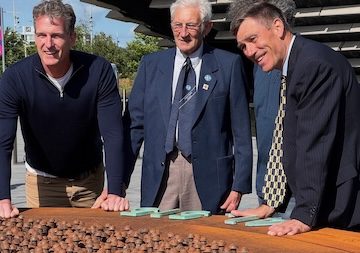
It’s a strange sensation, isn’t it? The buzz of anticipation of an event like the “Whale of a Weekend” in Dundee. The flurry of last-minute details, even the inevitable microphone mishaps and unexpected presenter illnesses!, all culminating in an event where connections are made, stories are shared, and passions ignited. For me, the true magic of these gatherings lies in the opportunity to connect with people and, of course, to champion one of my absolute favourite causes: South Georgia Island and the vital work of the South Georgia Heritage Trust (SGHT).
This past weekend felt like a perfect storm in the best possible way. Every element converged, seemingly by design, creating a powerful synergy. The programme brought together scientists, artists, and historians alongside former whalers, and what struck me most was how seamlessly they all referenced and reinforced each other’s contributions. It felt like a magnificent culmination of the last two decades of SGHT’s dedication.
The Whale Memorial Key Table: A Catalyst for Conversation
At the heart of the weekend’s programme was the Whale Memorial’s Key Table, a truly captivating centrepiece that sparked countless discussions.
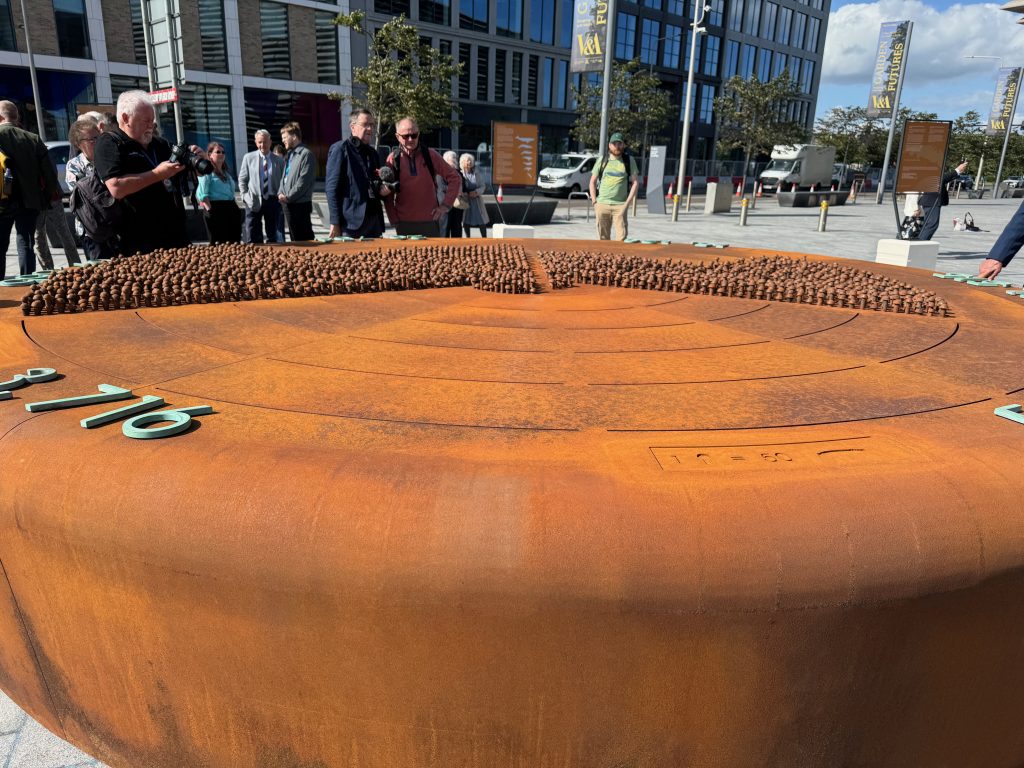
When Michael Visocchi, the brilliant artist and sculptor behind The Whale Memorial, shared his insights, we learned how deeply Grytviken and Stromness influenced the Key Table’s creation. He spoke of being profoundly moved by the sheer scale of the whale slaughter, but what truly personalised it for him were the meticulous records kept at the stations: the sex, size, and dimensions of the whales, even whether they were pregnant. These detailed accounts, coupled with graphic historical photographs of the processing, painted a vivid, unforgettable picture.
Michael seamlessly wove elements of the whaling stations into his art. The robust construction of the oil tanks and processing equipment, often held together with rivets, and the precise curves of the machinery became integral to the Key Table itself. Its distinctive round curve, adorned with reclaimed rivets, each representing 50 slaughtered whales, serves as a powerful and poignant visual reminder of the past.
Bridging the Gap: Science Through the Lens of Art
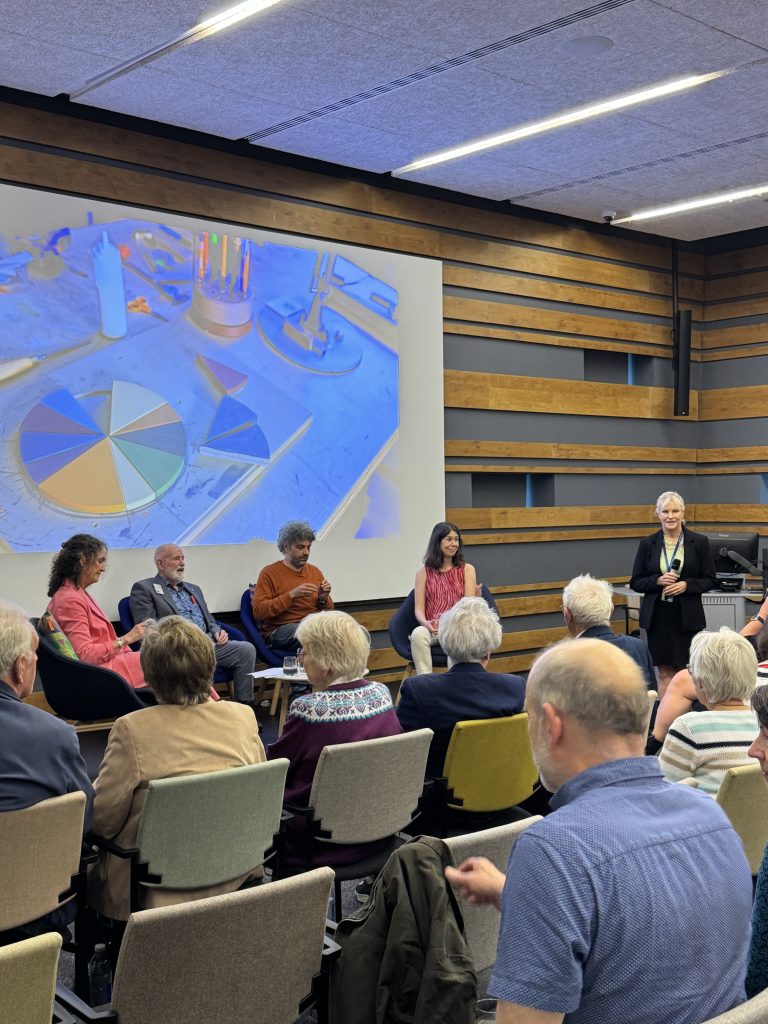
The conversation took an even more fascinating turn when Michael was joined by BAS scientist Jen Jackson and former whaler, John Alexander. It became crystal clear that for Jen, the immense volume of data, facts, and figures from her extensive whale research in the Antarctic Southern Ocean finds its most impactful expression outside the scientific community when communicated through an art piece like The Key Table.
Why? Because we are all inherently curious beings. When we gaze upon the table, questions tumble forth: Why the pie chart? What does it signify? What do the rivets truly represent? Are the whales recovering, and if so, which ones are thriving the most? Why are others still struggling? Who is conducting this vital research, and how can we contribute? The Key Table doesn’t just present information; it ignites a desire for deeper understanding, transforming abstract data into a compelling narrative.
But watch this short video, John Alexander’s introduction at this panel session, where for me he captures the very essence of this event.
You can watch the full recording of the panel session HERE
Unearthing History: Cetacean Collections and Modern Science
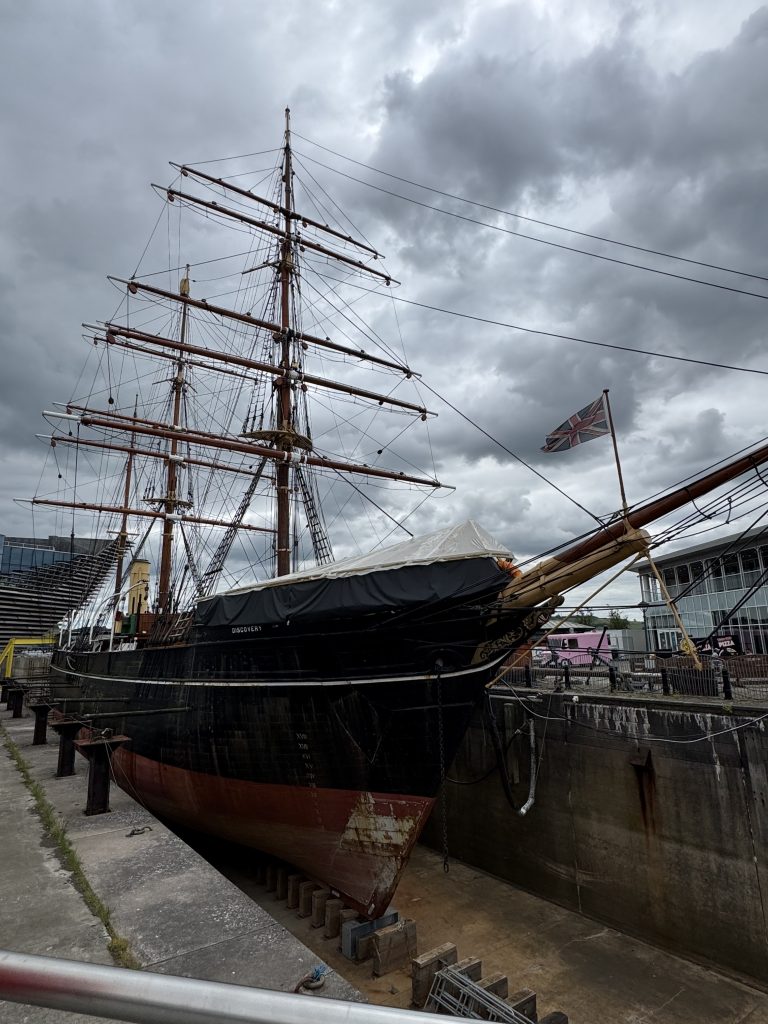
Listening to Richard Sabin, Principal Curator from the Natural History Museum (NHM), and Dr. Sophia Nicolov, an AHRC Early Career Research Fellow, share the rich history of cetacean exhibits was equally captivating. Their journey took us from the specimens brought back by the RSS Discovery, now dry-docked just outside, to expeditions to the South Pole. It was a revelation to realise that some of the specimens we admire at the NHM are over a century old!
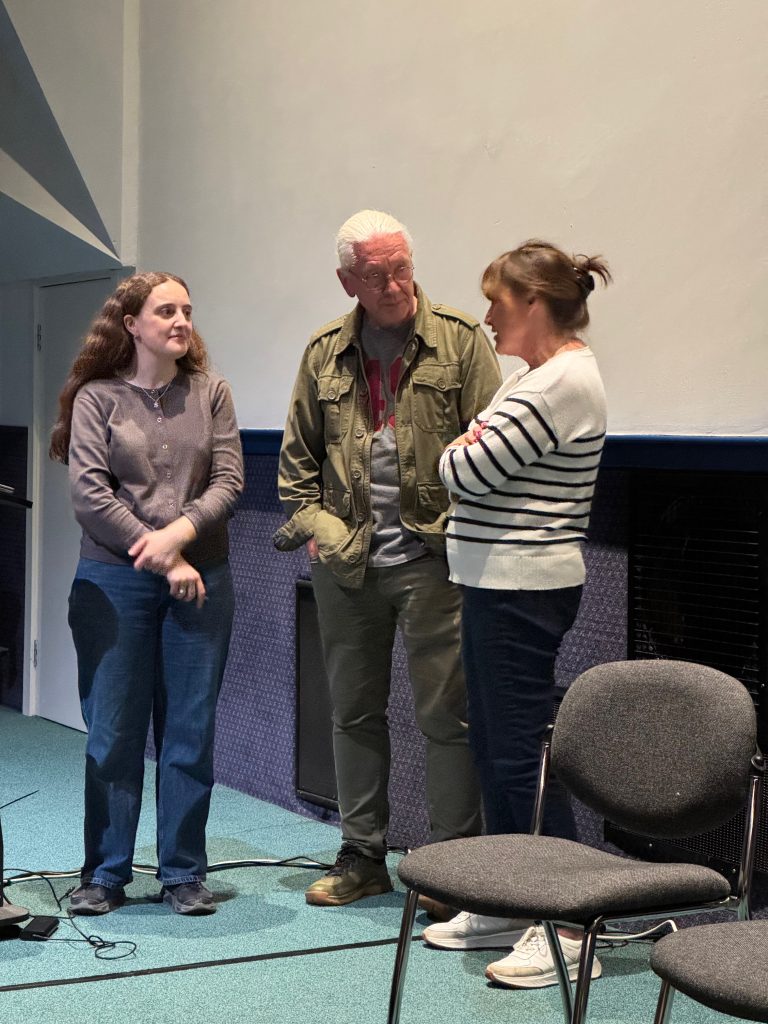
Dr. Nicolov’s current environmental project delves into how these early explorers and onboard scientists profoundly shaped both human and non-human lives. Crucially for our conversation, her work highlights the vital role of these historical cetacean specimens for scientific research on the past, present, and future. You can explore more about her fascinating work here: https://www.nhm.ac.uk/our-science/research/projects/cetacean-resources.html. This truly exemplifies the powerful partnership between history and science.
It’s a rare occurrence for specimens to be purposefully collected these days, for very good reason. Therefore, the occasional beached dolphin or whale that sadly cannot be saved represents a unique and valuable opportunity for further specimen collection. Richard’s amusing anecdote of wheeling a frozen dolphin carcass through the corridors of NHS Stanmore Hospital, past bewildered patients, for an MRI and CT scanner – on one of their training days when the scanners had downtime – was just one of many unexpected and delightful stories we heard!
The longevity and profound value of the samples brought back on the Discovery were brought vividly home when we learned that the very same scientist, Jen Jackson, had been able to extract samples from ear bones collected from various whale species. These tiny pieces of history contributed directly to her cutting-edge research on hormones, demonstrating the enduring power of historical collections. And yes, even a whale’s earwax plug has its secrets to tell about its life history! You would never have guessed that it is now revealing how human activity can stress out a whale. Read more on this research HERE
The Art of Understanding: When Science Meets Creativity
While the relationship between history and science might seem more intuitive, the connection between science and art can sometimes be harder to grasp. However, when Richard spoke about artist Joanne Thomson, who painted patches and replica pieces for the museum’s iconic blue whale skeleton, “Hope,” the synergy became clear. Her work, undeniably an art project, demonstrates how both art and science, as Richard suggested, often employ similar processes but simply present their findings to audiences in different ways. They are, in fact, interdependent.
And let’s not forget the whale art workshop, where adults and children alike freely decorated their own whales.
It was a wonderfully mindful activity for a Saturday morning, providing a quiet space to reflect on these magnificent creatures. The weekend culminated in a joyous celebration with a captivating Whale Puppet show and parade.

Fuelling a Greener Future, One Story at a Time. Every small step we take – from reusable bags to conscious consumption – ripples outwards, creating a wave of hope. Let’s rewrite the story of our planet, one click at a time. I believe in the power of storytelling. By sharing inspiring environmental initiatives, unsung sustainability heroes and practical tips, I aim to amplify the voices making a difference. Imagine a world where everyone is empowered to take action, one small change at a time. ‘Buy Me A Coffee’ donation is a quick and easy way to offer a small, one-off donation, that helps keep this platform running and allows me to continue sharing these vital stories. Just click the “Donate” button (top right corner). Every contribution, no matter the size, makes a difference. Thank you for being a part of this journey.
The Voices of Experience: Whalers and the SGHT Legacy
A small group of ex-whalers avidly joined the weekend, their presence adding an invaluable dimension. These sprightly individuals had contributed to the Whalers Memory Bank, a digital archive lovingly created to capture the untold stories of the men and women who ventured to South Georgia when work at home, in places like Dundee, was scarce. They swapped a life of hardship for one that, while equally challenging, offered camaraderie and decent wages on the remote island of South Georgia in the Southern Atlantic Ocean.
They participated in the launch event for this new platform, hosted by historian Dan Snow, who perfectly encapsulated the driving force behind this vital archive. Their contribution didn’t end there; they joined the artists, scientists, and historians on stage, offering their wisdom and insight into how those whaling times unfolded and why they were so significant. Many of them had witnessed firsthand the devastating decline in whale populations over time and are now ardent supporters and fundraisers for the conservation and research work carried out by SGHT, such as Jen Jackson’s impactful Hungry Humpback programme.
The Circle Complete
So, there you have it: Art and History, History and Science, Science and Art. The “Whale of a Weekend” truly completed the circle. It underscored, with powerful clarity, that all these disciplines need each other to tell the full, compelling story of South Georgia’s past, present, and future.
Links:
